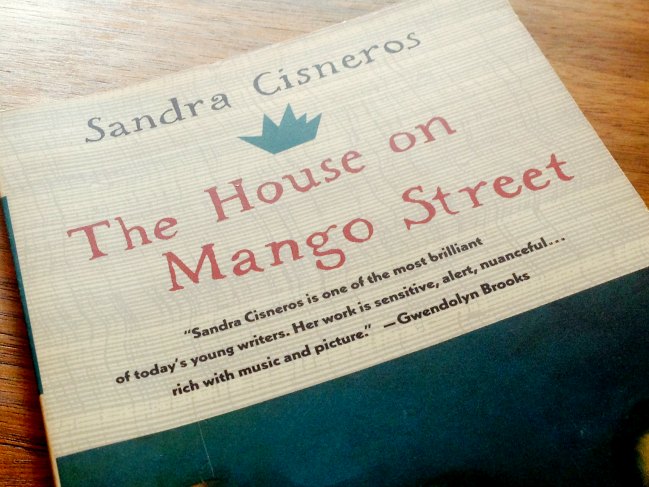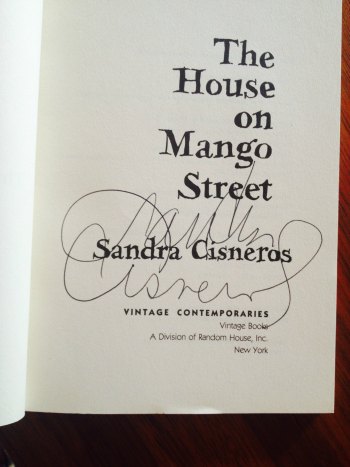
Sandra Cisneros rocks my world.
Twenty years after I first read The House on Mango Street, and thirty years since it was first published, the premier Latino author’s work is still relevant, powerful and as always, elegant.
And it’s thanks to Mango Street, and her book Woman Hollering Creek and Other Stories, that I made a huge leap in my own writing.
I learned that my story was relevant to fiction
These two books taught me that my story—my background—was totally relevant to fiction and could be just as poetic as the work of popular North American writers like Updike, Roth, Salinger, David Foster Wallace, and all the other white male icons of the literary world.
Before I found that beautiful little book: The House on Mango Street, I had immersed myself in the classics, books I love but that were so far from my own reality, I couldn’t imagine I would ever write anything worthwhile.
Hemingway is all wars, fishing and some rich kids playing with bulls in Spain.
Faulkner tells and retells the story of a bunch of losers who are still hung up on the U.S. civil war a century later.
Dostoyevsky, yeah, whatever.
The list goes on.
When I read The House on Mango Street, I understood that I could use Spanish words in my work. I could write about Mexico, and about how confused I was about my own identity.
You see, I am a man without a country. I was born in the Dominican Republic, but have no roots there, no family.
My mother and her side of the family is Haitian, but I barely spoke Creole back then, and I barely knew Haiti.
I grew up in Mexico. I identified with that, but I was not Mexican.
And my father’s land, New Zealand? Give me a break.
Also Read: Famous authors who were first published after 50
I felt I could write too
Sandra Cisneros’s writing was not just beautiful. It was complex and simple at the same time. It quickly connected with my own experience in ways I still don’t fully understand.
It’s like when you’re at a bar and you say you’re a writer and the drunk next to you asks whether you’ve read Charles Bukowski.
And then the drunks says he could write like that. Two drinks later he tells you he’s going to write a book.
Bukowski’s writing make it look simple. If he can do it, so can I.

That was how it felt when I first read The House on Mango Street.
It was as if someone had opened a door and said, “See, you can do it. You can write stories based on your own crazy life, your unconventional background. You and only you have had the experiences to address the issue of being rootless.”
I’ve read interviews with Cisneros. The books were meant for young adults.
I was in my late twenties, and her worked grabbed me by the back of the neck and shook me so that I got off my ass and started to write again.
But this time I was writing something different.
I wasn’t trying to imitate Faulkner or Hemingway.
I was writing honest stories about events and people I knew in places I had been. My writing was finally anchored to something that was uniquely mine.
And so I started a long journey that ten years later led to a finished novel, which took another ten years to get published.
I transposed my experiences of living in exile and of suffering a life of disconnect, to Cuba, where I had been traveling for work.
Now, my novel Sofrito is being published by Cinco Puntos Press, an independent press based in Texas.
Thank you, Sandra Cisneros.
Great books are always great no matter how many times you read them. I think it’s time for me to read House on Mango Street again.





Leave a Reply